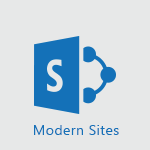SharePoint (Classic Sites) - Restricting a document to read-only mode (Extract a document) Video
In this video, you will learn how to restrict a document to read-only mode by extracting it.
This feature is useful when you need to edit a document on your SharePoint site while ensuring that no one else can make changes, even if it is shared for co-editing.
To extract the file, select it and choose "check out." Once extracted, a red tick will appear next to the document's name, indicating that you have exclusive editing rights.
Your employees will see a gray icon next to the file, indicating that it has been extracted and who extracted it.
When your employees open the document, it will open in reading mode, preventing any changes.
They will receive a message informing them that the document has been extracted.
If you want to allow your employees to edit the document again, you can switch it to "check in" mode and add a comment to clarify the changes you have made.
These comments will be available in the document's version history.
If you don't want to keep the changes made or if you haven't made any changes and want to make the document available to other colleagues, you can cancel the checkout extraction.
This will ensure that none of the changes you may have made to the document will be added to the version history.
Restricting a document to read-only mode by extracting it provides you with control over who can make changes, ensuring the integrity of your document.
- 2:05
- 2868 views
-
SharePoint (Classic Sites) - Sharing a folder or document with someone outside the company
- 3:44
- Viewed 2983 times
-
SharePoint (Classic Sites) - Targeting content using a specific audience
- 3:35
- Viewed 2968 times
-
SharePoint (Classic Sites) - Checking the granted shares
- 2:27
- Viewed 2935 times
-
SharePoint (Classic Sites) - Restoring an earlier version of your document
- 1:50
- Viewed 3130 times
-
Teams - Restrict a document to reading only
- 1:03
- Viewed 3252 times
-
Teams - Create and manage team channel
- 1:51
- Viewed 3448 times
-
SharePoint (Classic Sites) - Creating a permission group
- 3:53
- Viewed 2766 times
-
SharePoint (Classic Sites) - Creating a personalized permission level
- 2:46
- Viewed 2952 times
-
Protect a document shared by password
- 1:41
- Viewed 9730 times
-
How do I prevent the transfer of an email?
- 2:07
- Viewed 9149 times
-
Recovering deleted items (Recycle bin and Second-stage recycle bin)
- 2:18
- Viewed 5043 times
-
How do I block a sender?
- 1:01
- Viewed 3959 times
-
How do I share a document securely with Outlook?
- 1:49
- Viewed 3668 times
-
Create and manage team channel
- 1:51
- Viewed 3448 times
-
Do I share with OneDrive, SharePoint, or TEAMS?
- 2:24
- Viewed 3378 times
-
Granting access to the SharePoint site to someone outside the company
- 3:46
- Viewed 3305 times
-
Restrict a folder/document to certain members of your team
- 1:49
- Viewed 3279 times
-
Manage permissions
- 1:10
- Viewed 3279 times
-
Restrict a document to reading only
- 1:03
- Viewed 3252 times
-
Restoring an earlier version of your document
- 1:50
- Viewed 3130 times
-
How do I recognize a fraudulent email?
- 2:01
- Viewed 3078 times
-
Sharing a folder or document with someone outside the company
- 3:44
- Viewed 2983 times
-
Targeting content using a specific audience
- 3:35
- Viewed 2968 times
-
Creating a personalized permission level
- 2:46
- Viewed 2952 times
-
Checking the granted shares
- 2:27
- Viewed 2935 times
-
Understanding the different types and roles of team sites in SharePoint
- 3:05
- Viewed 2923 times
-
How to protect an email by encryption?
- 2:41
- Viewed 2817 times
-
Creating a permission group
- 3:53
- Viewed 2766 times
-
Ensure data security during a Teams meeting
- 1:48
- Viewed 2697 times
-
General security practices in Outlook
- 1:03
- Viewed 2684 times
-
Manage permissions
- 1:03
- Viewed 1666 times
-
Understand and Secure Information Sharing in Instant Messaging
- 2:38
- Viewed 1070 times
-
Manage Privacy in Private Channels
- 2:34
- Viewed 860 times
-
Restrict a Document to Certain Team Members
- 1:50
- Viewed 850 times
-
Secure Teams Upon Creation
- 2:57
- Viewed 830 times
-
Secure a Shared Document with a Password
- 1:28
- Viewed 818 times
-
Restrict a Document to Read-Only
- 0:58
- Viewed 810 times
-
Check Granted Shares
- 00:48
- Viewed 510 times
-
Recover deleted items
- 01:09
- Viewed 450 times
-
Modify Sharing Rules
- 00:53
- Viewed 406 times
-
Protect My Document with a Password and Expiration Date
- 01:02
- Viewed 403 times
-
Best Security Practices on OneDrive
- 01:27
- Viewed 392 times
-
Restore Your OneDrive Space
- 01:42
- Viewed 381 times
-
Avoid Abusive Document Sharing
- 00:57
- Viewed 356 times
-
Block a sender
- 01:54
- Viewed 326 times
-
Recall or replace an e-mail message
- 01:45
- Viewed 289 times
-
Share a document securely with Outlook
- 02:21
- Viewed 264 times
-
Prevent transfer for a meeting
- 01:19
- Viewed 257 times
-
Identify a fraudulent email
- 02:06
- Viewed 252 times
-
Prevent the forwarding of an email
- 01:01
- Viewed 250 times
-
Guide to Using the Microsoft Authenticator App
- 01:47
- Viewed 236 times
-
Protect an email by encrypting
- 01:10
- Viewed 235 times
-
Provide an overview of best security practices in Outlook
- 01:08
- Viewed 223 times
-
Concept of Multi-Factor Authentication
- 01:51
- Viewed 219 times
-
Turn on Multi-Factor Authentication in the Admin Section
- 02:07
- Viewed 181 times
-
Introduction to PowerBI
- 00:60
- Viewed 214 times
-
Introduction to Microsoft Outlook
- 01:09
- Viewed 209 times
-
Introduction to Microsoft Insights
- 02:04
- Viewed 218 times
-
Introduction to Microsoft Viva
- 01:22
- Viewed 221 times
-
Introduction to Planner
- 00:56
- Viewed 215 times
-
Introduction to Microsoft Visio
- 02:07
- Viewed 215 times
-
Introduction to Microsoft Forms
- 00:52
- Viewed 218 times
-
Introducing to Microsoft Designer
- 00:28
- Viewed 313 times
-
Introduction to Sway
- 01:53
- Viewed 221 times
-
Introducing to Word
- 01:00
- Viewed 213 times
-
Introducing to SharePoint Premium
- 00:47
- Viewed 194 times
-
Create a call group
- 01:15
- Viewed 289 times
-
Use call delegation
- 01:07
- Viewed 172 times
-
Assign a delegate for your calls
- 01:08
- Viewed 286 times
-
Ring multiple devices simultaneously
- 01:36
- Viewed 171 times
-
Use the "Do Not Disturb" function for calls
- 01:28
- Viewed 165 times
-
Manage advanced call notifications
- 01:29
- Viewed 179 times
-
Configure audio settings for better sound quality
- 02:08
- Viewed 238 times
-
Block unwanted calls
- 01:24
- Viewed 201 times
-
Disable all call forwarding
- 01:09
- Viewed 182 times
-
Manage a call group in Teams
- 02:01
- Viewed 184 times
-
Update voicemail forwarding settings
- 01:21
- Viewed 175 times
-
Configure call forwarding to internal numbers
- 01:02
- Viewed 170 times
-
Set call forwarding to external numbers
- 01:03
- Viewed 193 times
-
Manage voicemail messages
- 01:55
- Viewed 264 times
-
Access voicemail via mobile and PC
- 02:03
- Viewed 299 times
-
Customize your voicemail greeting
- 02:17
- Viewed 167 times
-
Transfer calls with or without an announcement
- 01:38
- Viewed 169 times
-
Manage simultaneous calls
- 01:52
- Viewed 178 times
-
Support third-party apps during calls
- 01:53
- Viewed 223 times
-
Add participants quickly and securely
- 01:37
- Viewed 185 times
-
Configure call privacy and security settings
- 02:51
- Viewed 179 times
-
Manage calls on hold
- 01:20
- Viewed 173 times
-
Live transcription and generate summaries via AI
- 03:43
- Viewed 166 times
-
Use the interface to make and receive calls
- 01:21
- Viewed 180 times
-
Action Function
- 04:18
- Viewed 177 times
-
Search Function
- 03:42
- Viewed 226 times
-
Date and Time Function
- 02:53
- Viewed 211 times
-
Logical Function
- 03:14
- Viewed 339 times
-
Text Function
- 03:25
- Viewed 238 times
-
Basic Function
- 02:35
- Viewed 199 times
-
Categories of Functions in Power FX
- 01:51
- Viewed 237 times
-
Introduction to Power Fx
- 01:09
- Viewed 224 times
-
The New Calendar
- 03:14
- Viewed 364 times
-
Sections
- 02:34
- Viewed 215 times
-
Customizing Views
- 03:25
- Viewed 203 times
-
Introduction to the New Features of Microsoft Teams
- 00:47
- Viewed 395 times
-
Guide to Using the Microsoft Authenticator App
- 01:47
- Viewed 236 times
-
Turn on Multi-Factor Authentication in the Admin Section
- 02:07
- Viewed 181 times
-
Concept of Multi-Factor Authentication
- 01:51
- Viewed 219 times
Objectifs :
This document aims to provide a comprehensive guide on how to manage document editing in SharePoint, specifically focusing on the checkout and check-in process to ensure exclusive editing rights and version control.
Chapitres :
-
Introduction to Document Management in SharePoint
Managing documents effectively in SharePoint is crucial for collaboration and version control. This guide will walk you through the process of checking out a document to ensure that only you can make changes, even when the document is shared for co-editing. -
Checking Out a Document
To begin editing a document exclusively, you need to check it out. Follow these steps: 1. Select the file you wish to edit. 2. Choose the 'Check Out' option. Once you have checked out the document, a red tick will appear next to the document's name, indicating that it has been extracted. This action prevents others from making changes while you are editing. -
Understanding Document Status for Colleagues
When a document is checked out, it will appear grayed out to your colleagues. They can see who has extracted the document by hovering over the file name. If they attempt to open the document, it will open in reading mode, and they will receive a message indicating that the document is currently checked out. -
Switching to Check-In Mode
After making your changes, if you want to allow your colleagues to edit the document again, you need to switch it to check-in mode. Here’s how: 1. Select the 'Check In' option. 2. Add a comment to clarify the nature of the changes you made. These comments will be recorded in the document's version history, providing context for future reference. -
Cancelling the Checkout
If you decide not to keep the changes made to the document or if you haven't made any changes, you can cancel the checkout. This will revert the document back to its previous state and make it available for others to edit. To cancel the checkout: 1. Select the 'Cancel Checkout' option. Please note that any changes made during the checkout process will not be saved or added to the version history. -
Conclusion
Understanding the checkout and check-in process in SharePoint is essential for effective document management. By following these steps, you can ensure that your edits are exclusive and that version control is maintained, allowing for a smoother collaborative experience.
FAQ :
What does it mean to check out a document in SharePoint?
Checking out a document in SharePoint means that you are taking exclusive control of that document, preventing others from making changes until you check it back in.
How can I edit a document while ensuring no one else can make changes?
You can edit a document exclusively by checking it out. This will prevent others from editing it until you check it back in.
What happens if someone tries to edit a checked-out document?
If someone tries to open a checked-out document, it will open in reading mode, and they will receive a message indicating that the document has been extracted by another user.
Can I cancel the checkout of a document?
Yes, you can cancel the checkout of a document, which will discard any changes you made and make the document available for others to edit.
What is the purpose of adding comments when checking in a document?
Adding comments when checking in a document helps clarify the changes made, and these comments will be recorded in the document's version history.
Quelques cas d'usages :
Managing Document Revisions in a Team
In a collaborative environment, a project manager can check out a project proposal document to make necessary revisions without interference from team members. Once the edits are complete, they check the document back in, adding comments to explain the changes, which helps maintain a clear version history.
Ensuring Document Integrity During Updates
A compliance officer can check out sensitive policy documents to ensure that no unauthorized changes are made while they update the content. This process ensures that the document remains secure and only the officer can make changes until they are ready to check it back in.
Facilitating Document Review Processes
An editor can check out a draft article for review, allowing them to make edits without others altering the document simultaneously. Once the review is complete, they check it back in, allowing the team to see the updated version and comments on the changes made.
Glossaire :
SharePoint
A web-based collaboration platform developed by Microsoft that allows users to store, organize, share, and access information from any device.
Check Out
A feature in SharePoint that allows a user to take exclusive control of a document, preventing others from making changes until it is checked back in.
Check In
The process of uploading a document back to SharePoint after editing, allowing others to access and edit the document.
Version History
A record of all changes made to a document, including previous versions, which can be reviewed or restored.
Reading Mode
A mode in which a document can be viewed but not edited, typically used for reviewing content.
Gray Appearance
Indicates that a document is currently checked out by another user, preventing editing by others.
Cancel Checkout
An option to discard any changes made to a document after checking it out, allowing it to be available for editing by others again.




